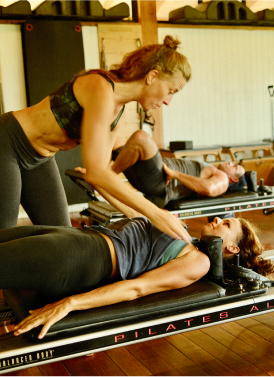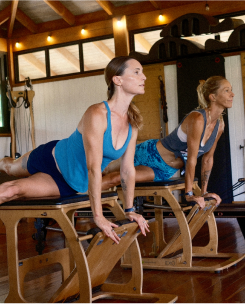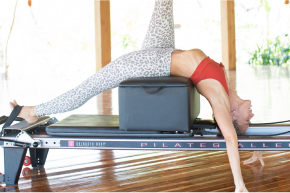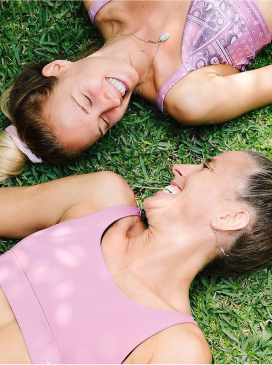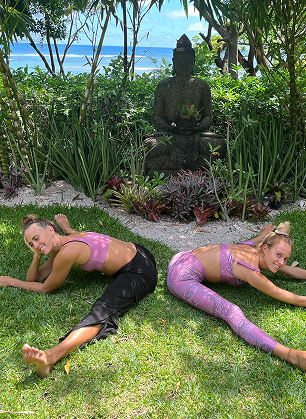If you are a fitness fanatic, we are sure you must have landed on some ad for “wall Pilates for weight loss” while scrolling through your social media. In these ads, you might have come across people lying on their backs with their legs at a 90-degree angle on the wall or maybe doing pushups against the wall, right?
And, all of them promise to give you fast results in only 28 days. We kid you not, we too, were fascinated and wanted an answer to: is wall Pilates effective or not? Let’s find that out below, shall we? Starting with:
What Is Wall Pilates?
If you are clueless about these ads, then here’s a quick explanation. Wall Pilates is basically performing regular Pilates pressed up against the wall. The wall here serves as a resistance source and helps you through your wall pilates workout.
A Few Things Before Jumping In
Wall Pilates for weight loss is not exactly a beginner-friendly workout. If we are very upfront about it, our instructors believe that it is vital to have some basic knowledge and experience of Pilates exercises to avoid any injuries. Also, about the transformational results that those ads claim? They only hit your pain point, and there is no truth to them. Rather, here is a truth that many are not saying:
Wall Pilates Isn’t Really Pilates
Having said that, we would like to highlight that the best wall Pilates workout plans borrow some movement patterns from the classic Pilates exercises. However, they do not follow the foundational method, depth, or structure that defines Pilates as a discipline. These workout regimens particularly matter if you care about real results, body awareness, and injury prevention.
Does Wall Pilates Work?
Wall Pilates Lacks Many Aspects
Pilates was developed with a precise system including apparatus work, mat work, progressive sequencing, and breathing techniques. These exercise plans lack various aspects, including:
- Progression: Wall Pilates for weight loss does not follow a structured method. Rather, they are a bunch of movements with no logical framework.
- Control: TikTok videos rarely focus on spinal alignment, emphasize breath, or scapular stability. All of these aspects are vital in Pilates.
- Precision: Putting your feet up against the wall can never be the same as working with spring resistance, which dynamically adjusts to your body.
If you are learning movement patterns with no proper guidance, you might actually reinforce worse patterns rather than improving them. This is why our expert instructors provide onsite and in-person training to fit your schedule and practice Pilates in the best possible way.
It Offers No Expert Guidance
If you are doing wall Pilates, then you are consciously or subconsciously replacing your instructor with a mirror. Now, our instructors at Pilates Nosara adjust your form, make subtle corrections, and give honest feedback. A mirror or a wall will never do that. So, while performing wall Pilates, you are completely dependent on your own. There is no trained eye spotting unsafe movements or postural issues. Moreover, for people trying to improve thier posture or recovering from injury, this can go the wrong way.
The Wall Can Never Be A Reformer
One of the most misleading promises about Wall Pilates is that “it is exactly like a reformer, but free.” Let us burst that bubble, that it’s simply not true. A reformer machine has springs that challenge control and strength throughout the entire range of motion. To help you engage your muscles and move mindfully, the tension keeps changing with your movement.
Pushing against a flat surface gives static resistance; it does not provide feedback, does not adapt, and does not challenge you in different ways. It might feel difficult, but that does not make it Pilates.
Wall Pilates Is More About Fitness Than Pilates
Wall Pilates for weight loss is not completely useless. We might agree that it provides a decent fitness routine if you want to raise your heart rate, work on your core endurance, and move your body. But, referring to this as Pilates might be unfair and misleading. Pilates is not merely an exercise plan; it is a complete body system built around movement, alignment, breath, and flow. The classic Pilates comes with real goals like:
- Rehabilitating injuries
- Enhancing neuromuscular coordination
- Increasing spinal mobility
- Strengthening postural muscles
Keeping this in mind, wall Pilates does not help with these goals in an intentional or structured manner.
It Might Cause More Damage Than Good
If you don’t know how to do wall Pilates, then there is a good chance you will end up doing it incorrectly without any proper guidance. Some of the trendiest wall Pilates moves might cause more harm, such as:
- Reinforce shallow breathing patterns
- Overload the lower back
- Compress the spine
- Strain the hip flexors
You might feel sore in the short term, but in the long run, you might be building imbalances without even knowing.
So, Should You Try Wall Pilates For Weight Loss?
To stay active at home, it is a great idea to start a light workout. Wall Pilates can be a great starting point as long as you know what you are doing. But if you are serious about healing your injury or improving your posture, then you must not waste your time trying out the over-hyped best wall Pilates workout trends. They are not a substitute for classic Pilates.
Concluding Thoughts
Wall Pilates might be trendy for now, but real Pilates has stood the test of time for a reason. It is intentional and structured. And it is guided by instructors who are aware of the movement from the inside out.
So, the next time you find yourself searching for wall Pilates for weight loss, we urge you to take a moment to ask yourself: Are you looking for transformation or entertainment? If it is the former, then contact our experts at Pilates Nosara and experience Pilates exactly the way it was meant to be practiced.




